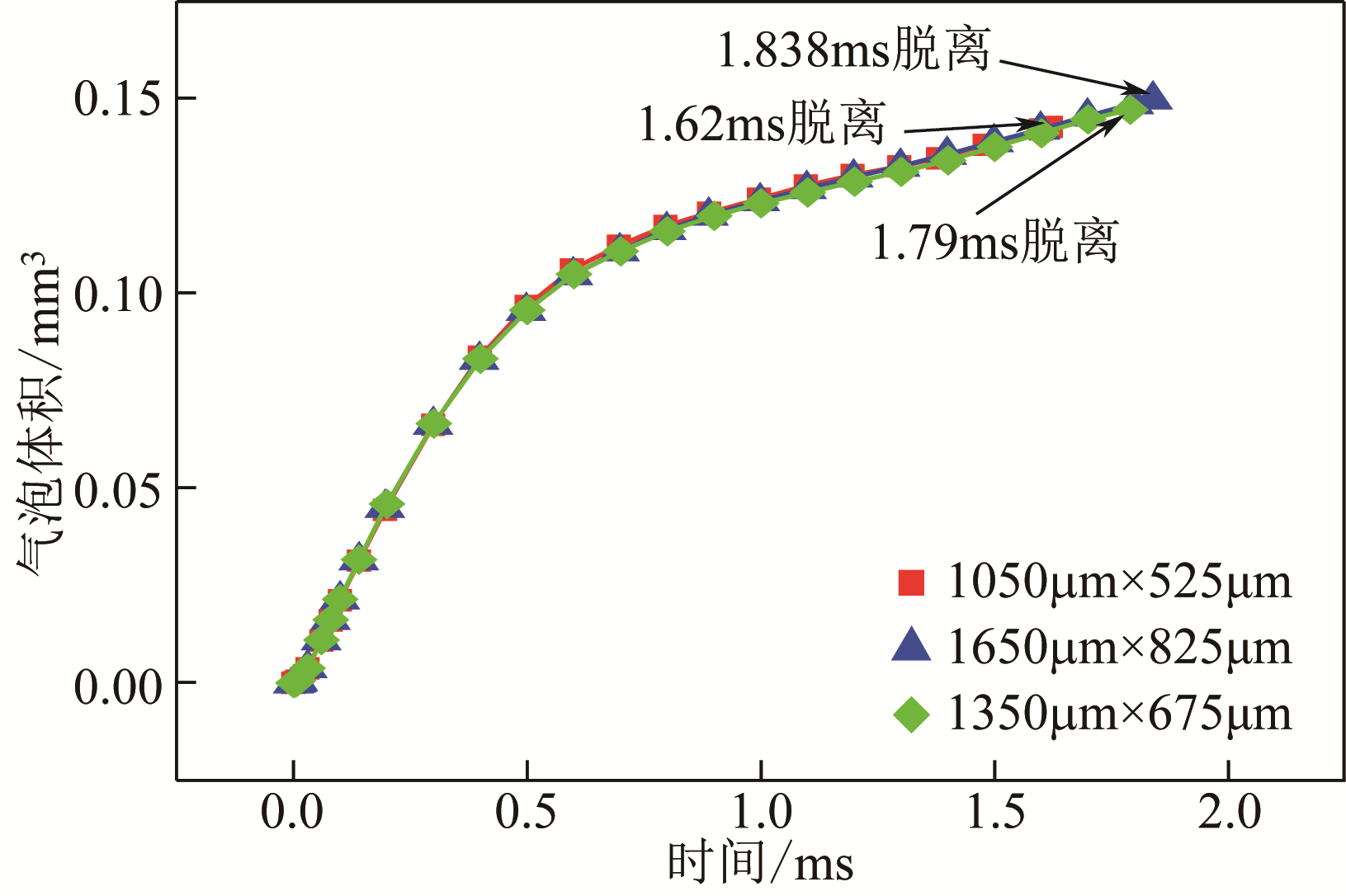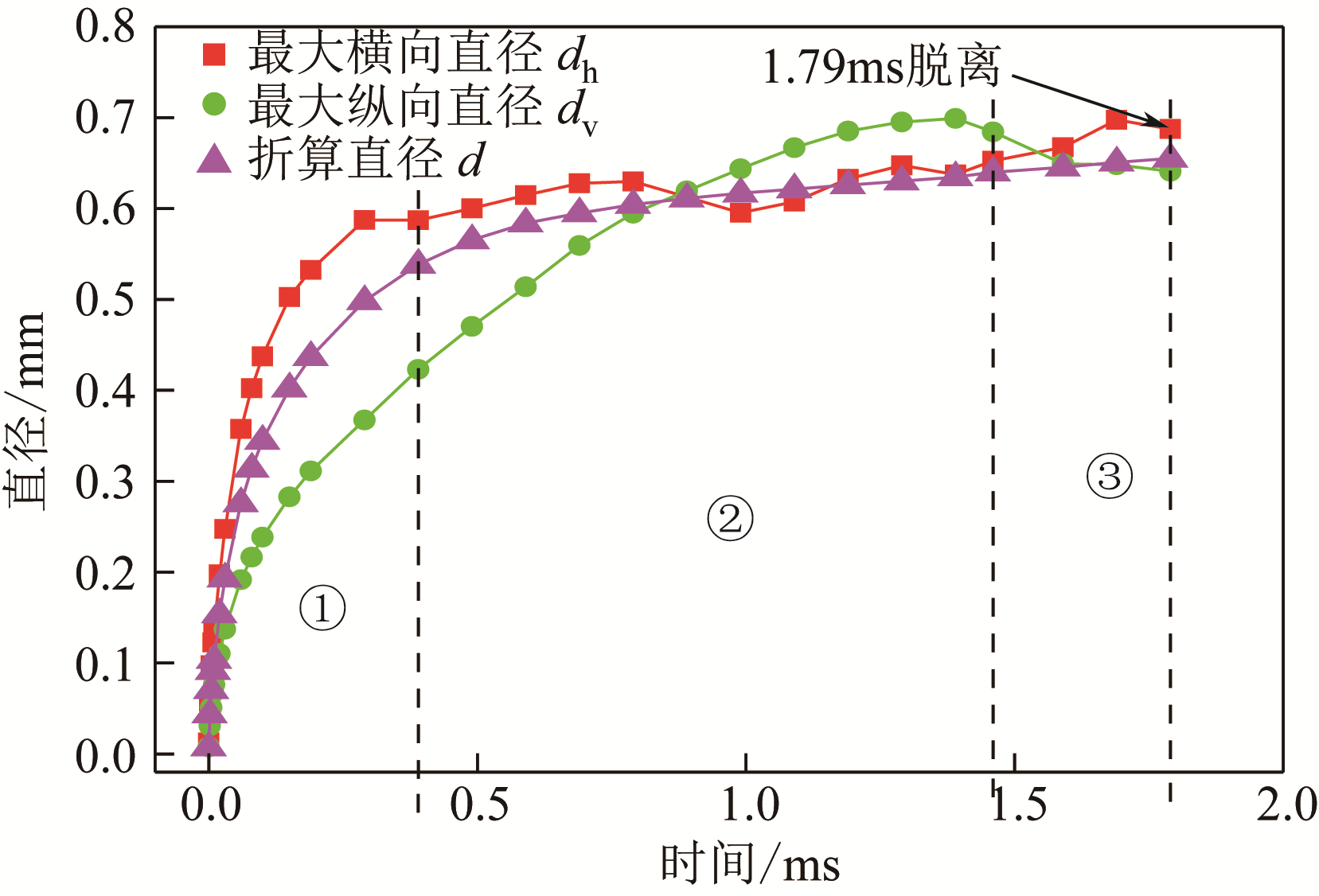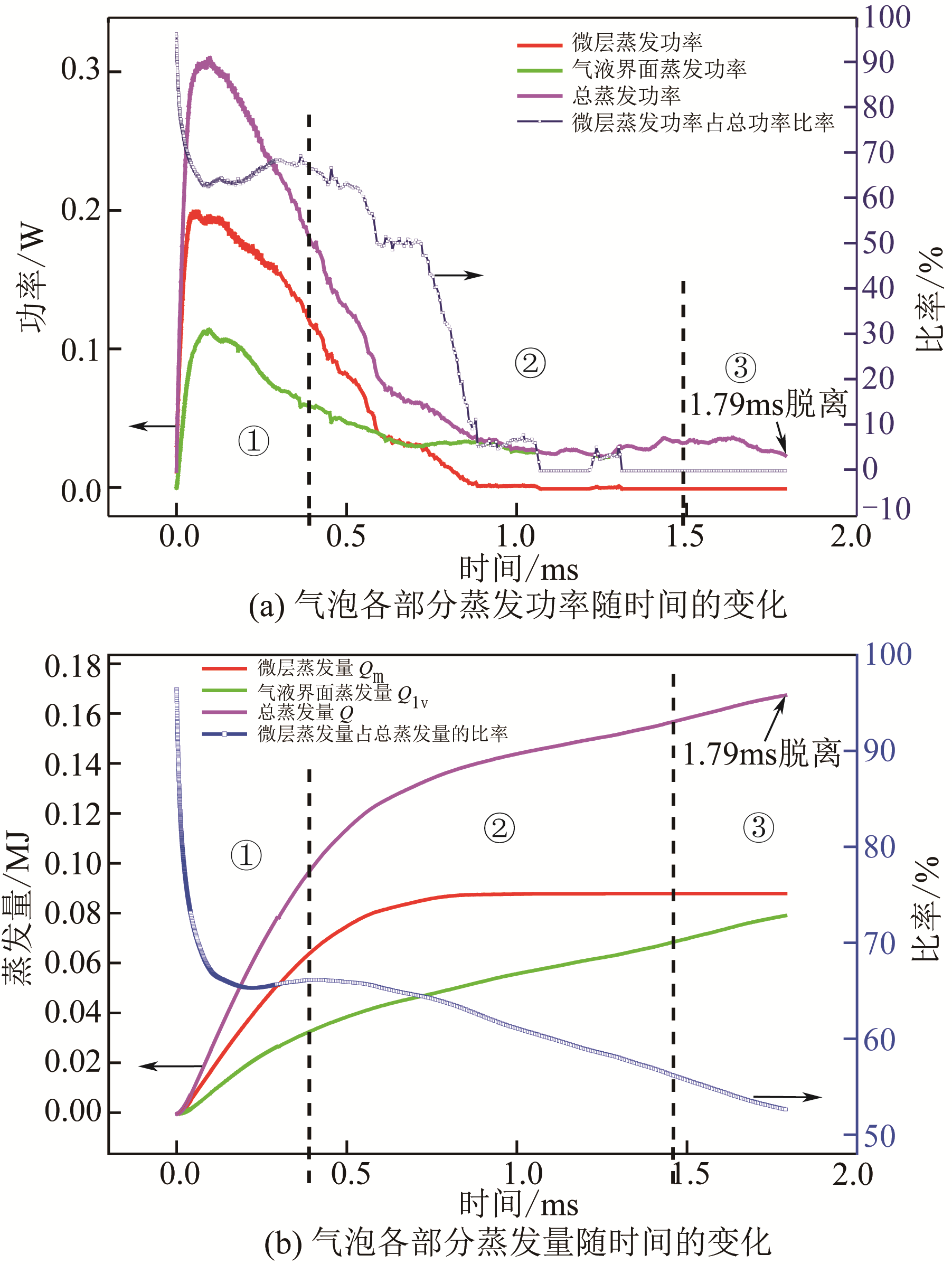| 1 |
CHU K H , JOUNG Y S , ENRIGHT R , et al . Hierarchically structured surfaces for boiling critical heat flux enhancement[J]. Applied Physics Letters, 2013, 102(15): 151602.
|
| 2 |
DONG L , QUAN X , CHENG P . An experimental investigation of enhanced pool boiling heat transfer from surfaces with micro/nano-structures[J]. International Journal of Heat and Mass Transfer,2014, 71: 189-196.
|
| 3 |
DHILLON N S , BUONGIORNO J , VARANASI K K . Critical heat flux maxima during boiling crisis on textured surfaces[J]. Nature Communications, 2015, 6: 5247.
|
| 4 |
KIM S H , LEE G C, KANG J Y , et al . Boiling heat transfer and critical heat flux evaluation of the pool boiling on micro structured surface[J]. International Journal of Heat and Mass Transfer, 2015, 91: 1140-1147.
|
| 5 |
WEN R , LI Q , WANG W , et al . Enhanced bubble nucleation and liquid rewetting for highly efficient boiling heat transfer on two-level hierarchical surfaces with patterned copper nanowire arrays[J]. Nano Energy, 2017, 38: 59-65.
|
| 6 |
KUNKELMANN C , STEPHAN P . Numerical simulation of the transient heat transfer during nucleate boiling of refrigerant HFE-7100[J]. International Journal of Refrigeration, 2010, 33(7): 1221-1228.
|
| 7 |
CHEM Z , UTAKA Y . On heat transfer and evaporation characteristics in the growth process of a bubble with microlayer structure during nucleate boiling[J]. International Journal of Heat and Mass Transfer, 2015, 81: 750-759.
|
| 8 |
SATO Y , NICENO B . Nucleate pool boiling simulations using the interface tracking method: boiling regime from discrete bubble to vapor mushroom region[J]. International Journal of Heat and Mass Transfer, 2017, 105: 505-524.
|
| 9 |
SATO Y , NICENO B . A depletable micro-layer model for nucleate pool boiling[J]. Journal of Computational Physics, 2015, 300: 20-52.
|
| 10 |
SUSSMAN M , SMEREKA P , OSHER S . A level set approach for computing solutions to incompressible two-phase flow[J]. Journal of Computational Physics, 1994, 114(1): 146-159.
|
| 11 |
SON G, DHIR V K . Numerical simulation of film boiling near critical pressures with a level set method[J]. Journal of Heat Transfer, 1998, 120(1): 183-192.
|
| 12 |
SON G, DHIR V K , RAMANUJAPU N . Dynamics and heat transfer associated with a single bubble during nucleate boiling on a horizontal surface[J]. Journal of Heat Transfer, 1999, 121(3): 623-631.
|
| 13 |
SON G, RAMANUJAPU N , DHIR V K . Numerical simulation of bubble merger process on a single nucleation site during pool nucleate boiling[J]. Journal of Heat Transfer, 2002, 124(1): 51-62.
|
| 14 |
SON G, DHIR V K , Numerical simulation of nucleate boiling on a horizontal surface at high heat fluxes [J]. International Journal of Heat and Mass Transfer, 2008, 51(9/10): 2566-2582.
|
| 15 |
LEE W, SON G . Numerical simulation of boiling enhancement on a microstructured surface[J]. International Communications in Heat and Mass Transfer, 2011, 38(2): 168-173.
|
| 16 |
HIRT C W , NICHOLS B D . Volume of fluid (VOF) method for the dynamics of free boundary[J]. Journal of Computational Physics, 1981, 39(1): 201-225.
|
| 17 |
YOUNGS D L . Time-dependent multi-material flow with large fluid distortion[M]. MORTON K W, BAINES M J. New York: Academic Press, 1982: 274-285.
|
| 18 |
KUNKELMANN C , STEPHAN P . CFD simulation of boiling flows using the volume-of-fluid method within open foam[J]. Numerical Heat Transfer Part A: Applications, 2009, 56(8): 631-646.
|
| 19 |
JIA H W , ZHANG P , FU X , JIANG S C . A numerical investigation of nucleate boiling at a constant surface temperature[J]. Applied Thermal Engineering, 2015, 88: 248-257.
|
| 20 |
LING K , LI Z Y , TAO W Q . A direct numerical simulation for nucleate boiling by the VOSET method[J]. Numerical Heat Transfer Part A: Applications, 2013, 65(10): 949-971.
|
| 21 |
ZHANG L , LI Z D , LI K , et al . Influence of heater thermal capacity on bubble dynamics and heat transfer in nucleate pool boiling[J]. Applied Thermal Engineering, 2015, 88: 118-126.
|
| 22 |
BADILLO A . Quantitative phase-field modeling for boiling phenomena[J]. Physical Reviewe, 2012, 86(4): 041603.
|
| 23 |
SCHRAGE R W . A theoretical study of interphase mass transfer[D]. New York: Columbia University, 1953.
|
| 24 |
KNUDSEN M , PARTINGTON J R . The kinetic. Theory of gases. Some modern aspects[J]. The Journal of Physical Chemistry, 1935, 39(2): 307.
|
| 25 |
MAREK R , STRAUB J . Analysis of the evaporation coefficient and the condensation coefficient of water[J]. International Journal of Heat and Mass Transfer, 2001, 44(1): 39-53.
|
| 26 |
ZHOU Z , SHI J , CHEN H H , et al . Two-phase flow over flooded micro-pillar structures with engineered wettability pattern[J]. International Journal of Heat and Mass Transfer, 2014, 71: 593-605.
|
| 27 |
CHEN B , ZHOU Z , SHI J , et al . Flooded two-phase flow dynamics and heat transfer with engineered wettability on microstructured surfaces[J]. Journal of Heat Transfer, 2015, 137(9): 091021.
|
| 28 |
ZHAO Z , ZHANG J , JIA D , et al . Thermal performance analysis of pool boiling on an enhanced surface modified by the combination of microstructures and wetting properties[J]. Applied Thermal Engineering, 2017, 117: 417-426.
|
| 29 |
LEE W H . A pressure iteration scheme for two-phase flow modeling[M]. Los Alamos: Los Alamos Scientific Laboratory, 1980: 407-431.
|
| 30 |
GIBOU F , CHEN L , NGUYEN D , et al . A level set based sharp interface method for the multiphase incompressible Navier-Stokes equations with phase change[J]. Journal of Computational Physics, 2007, 222(2): 536-555.
|
| 31 |
SHIN S , JURIC D . Modeling three-dimensional multiphase flow using a level contour reconstruction method for front tracking without connectivity[J]. Journal of Computational Physics, 2002, 180(2): 427-470.
|
| 32 |
GANAPATHY H , SHOOSHTARI A , CHOO K . Volume of fluid-based numerical modeling of condensation heat transfer and fluid flow characteristics in microchannels[J]. International Journal of Heat and Mass Transfer, 2013, 65: 62-72.
|
| 33 |
SUN D L , XU J L , WANG L . Development of a vapor-liquid phase change model for volume-of-fluid method in FLUENT[J]. International Communications in Heat and Mass Transfer, 2012, 39(8): 1101-1106.
|
| 34 |
LEE W, SON G, YOON H Y . Numerical study of bubble growth and boiling heat transfer on a microfinned surface[J]. International Communications in Heat and Mass Transfer, 2012, 39(1): 52-57.
|
| 35 |
LEE W, SON G . Three-dimensional simulation of bubble growth on horizontal microstructured surfaces[C]//Begell House, Inc. Proceedings of Cht-12-Ichmt International Symposium on Advances in Computational Heat Transfer. New York: Begell House, Inc, 2012: 1091-1100.
|
| 36 |
LI Q , YU Y , ZHOU P , et al . Enhancement of boiling heat transfer using hydrophilic-hydrophobic mixed surfaces: a lattice Boltzmann study[J]. Applied Thermal Engineering, 2017, 132: 490-499.
|
| 37 |
YU Y , WEN Z X , LI Q , et al . Boiling heat transfer on hydrophilic-hydrophobic mixed surfaces: a 3D lattice Boltzmann study[J]. Applied Thermal Engineering, 2018, 142: 846-854.
|
| 38 |
BRACKBILL J U , KOTHE D B , ZEMACH C . A continuum method for modeling surface tension[J]. Journal of Computational Physics, 1992, 100: 335-354.
|
| 39 |
UTAKA Y , KASHIWABARA Y , OZAKI M . Microlayer structure in nucleate boiling of water and ethanol at atmospheric pressure[J]. International Journal of Heat and Mass Transfer, 2013, 57(1): 222-230.
|
| 40 |
ISSA R I . Solution of the implicitly discretized fluid flow equations by operator-splitting[J]. Journal of Computational Physics, 1985, 62(1): 40-65.
|
| 41 |
YABUKI T , NAKABEPPU O . Heat transfer mechanisms in isolated bubble boiling of water observed with MEMS sensor[J]. International Journal of Heat and Mass Transfer, 2014, 76: 286-297.
|
 ),Yuan SUN,Hongyang XIAO,Lin LIU
),Yuan SUN,Hongyang XIAO,Lin LIU







